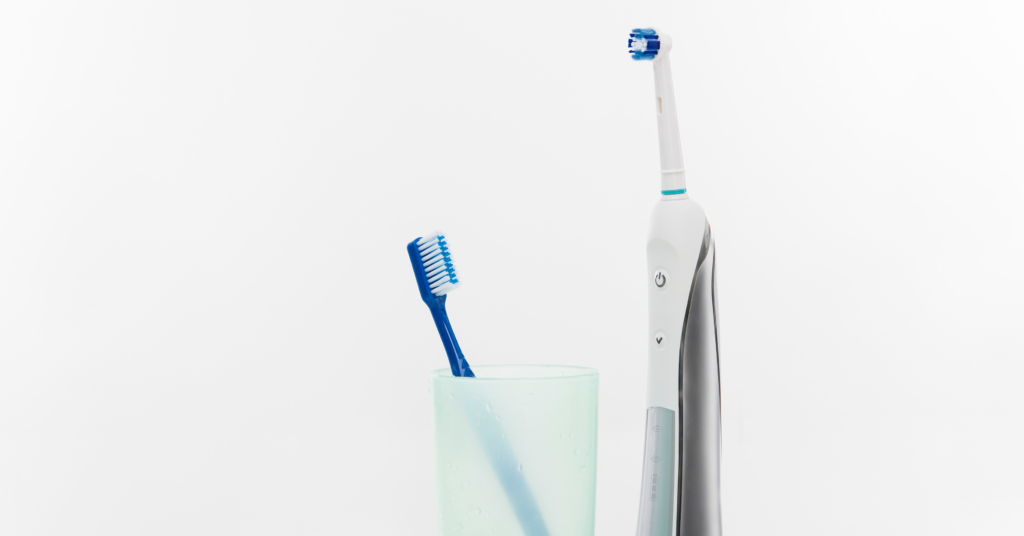The Importance of Choosing the Right Toothbrush and Toothpaste


Oral hygiene is a crucial aspect of overall health, and taking care of your teeth and gums can help prevent tooth decay, gum disease, and other oral health problems. Brushing your teeth twice a day with a good toothbrush and toothpaste is a key part of maintaining good oral health, but it’s important to choose the right products to meet your needs. With so many toothbrushes and toothpastes available, it can be overwhelming to know where to start. In this article, we’ll provide you with an overview of the different types of toothbrushes and toothpastes available, and how to choose the right one for you. We’ll also cover tips for brushing your teeth correctly, the importance of flossing and using mouthwash, and the best ways to keep your teeth healthy and sparkling. Whether you’re a seasoned oral hygiene pro or new to the game, this article will help you take your dental hygiene to the next level.
Types of Toothbrushes and Benefits of Each


There are several types of toothbrushes available, including manual and electric. Manual toothbrushes come in various shapes, sizes, and bristle textures, while electric toothbrushes have different vibration patterns and brush head sizes.
- Manual toothbrushes: The most common type of toothbrush, manual toothbrushes come in a variety of bristle textures, such as soft, medium, and hard. Soft bristles are best for sensitive teeth and gums, while medium and hard bristles are best for removing plaque and tartar.
- Electric toothbrushes: Electric toothbrushes use oscillating or rotating bristles to clean teeth and gums. They can be more effective than manual toothbrushes for removing plaque and improving gum health. Some electric toothbrushes also come with built-in timers and pressure sensors to help ensure that you brush for the recommended two minutes.
Whether you choose a manual or electric toothbrush, it’s essential to understand how often you should replace your toothbrush to maintain its efficacy and ensure oral health.
Choosing the Right Toothpaste


Toothpaste is an important part of oral hygiene and comes in various flavours, textures, and active ingredients. The most common active ingredients in toothpaste include fluoride, baking soda, hydrogen peroxide, and various herbs and essential oils. When choosing toothpaste, it is important to consider the following factors:
- Fluoride content: Fluoride helps strengthen teeth and prevent tooth decay. If you are at a high risk of cavities, it is important to choose a toothpaste that contains fluoride.
- Sensitivity: If you have sensitive teeth, choose a toothpaste specifically designed for sensitivity, which will contain desensitising ingredients such as potassium nitrate or strontium chloride.
- Tartar control: Tartar buildup can lead to gum disease and tooth decay. If you have a tendency to develop tartar, choose a toothpaste that contains ingredients to control tartar, such as pyrophosphate.
When considering toothpaste, be aware of the ingredients. Especially since some substances, like sugar, can be detrimental. Understand what sugar does to teeth to make an informed decision.
Tips for Brushing Your Teeth Correctly
Brush for two minutes: It is recommended to brush your teeth for two minutes, twice a day. Use a timer or a toothbrush with a built-in timer to make sure you brush for the recommended time.
Use gentle, circular motions: Use gentle, circular motions to clean all surfaces of your teeth and gums. Avoid using hard, back-and-forth motions, as they can damage your gums and tooth enamel.
Clean all surfaces of your teeth: Make sure to clean all surfaces of your teeth, including the fronts, backs, and tops. Don’t forget to brush your tongue and the roof of your mouth to remove bacteria and freshen your breath.
For individuals with braces, brushing techniques can slightly differ. Dive into our guide on oral hygiene for braces for specialized brushing tips.
The Importance of Flossing and Using Mouthwash


In addition to brushing your teeth, flossing and using mouthwash are important for maintaining oral hygiene.
Flossing: Flossing helps remove plaque and food particles from between your teeth and along your gum line, where brushing alone cannot reach. It is recommended to floss at least once a day.
Mouthwash: Mouthwash can help kill bacteria in your mouth and freshen your breath. Mouthwash also helps to reduce plaque and gum disease by reaching areas in your mouth that your toothbrush and floss cannot. Some mouthwashes contain fluoride to help strengthen teeth, while others contain antiseptic ingredients to kill bacteria. Make sure you choose a mouthwash that does not contain alcohol. While mouthwash is excellent for overall oral hygiene, it can be specifically effective in tackling bad breath. Read our tips for fresh breath to say goodbye to bad breath for good.
Best Ways to Keep Your Teeth Healthy and Sparkling
In addition to brushing, flossing, and using mouthwash, there are several other ways to keep your teeth healthy and sparkling:
- Visit your dentist regularly: Visit your White Rock dentist regularly: Staying on top of your dental check-ups and cleanings is crucial for preventing tooth decay and gum disease. Your dentist can also identify and treat any oral health problems in their early stages. Visiting your dentist regularly is pivotal. If dental visits cause you anxiety, discover ways on how to overcome fear of the dentist to ensure you never miss a check-up.
- Eat a balanced diet: A diet high in sugar and carbohydrates can increase the risk of tooth decay and gum disease. Make sure to eat a balanced diet that includes plenty of fruits and vegetables, whole grains, and lean protein.
- Limit sugary and acidic foods and drinks: Foods and drinks high in sugar and acid can damage your tooth enamel and increase the risk of tooth decay. Try to limit sugary and acidic foods and drinks, and brush your teeth or rinse your mouth with water after consuming them.
- Avoid smoking and using tobacco products: Smoking and using tobacco products can increase the risk of oral cancer and gum disease. If you smoke or use tobacco products, consider quitting to protect your oral and overall health.
In conclusion, oral hygiene is a critical aspect of overall health, and choosing the right toothbrush and toothpaste is an important part of maintaining good oral health. There are several types of toothbrushes available, each with its own benefits, and selecting the right one depends on your personal needs and preferences. When it comes to toothpaste, it’s essential to choose a brand that meets your specific oral health needs, whether it be for sensitivity, whitening, or freshening breath. Proper brushing techniques, along with flossing and using mouthwash, can help remove plaque and prevent tooth decay and gum disease. Maintaining a balanced diet, limiting sugary and acidic foods and drinks, and avoiding smoking and tobacco use can also help keep your teeth and gums healthy. Regular dental check-ups can also help prevent oral health problems and ensure that any issues are detected and treated early. By taking these steps, you can enjoy a healthy and beautiful smile for years to come.
Ready to take your oral hygiene to the next level? Schedule an appointment with our experienced White Rock dentist today! Our team of dental professionals is dedicated to providing you with personalized care and helping you achieve optimal oral health. Whether you need a routine check-up, a professional cleaning, or specific treatments tailored to your needs, we’ve got you covered. Don’t wait until dental issues arise—take proactive steps towards a healthy and beautiful smile. Visit our White Rock dentist page to learn more and book your appointment now. Your smile deserves the best care!